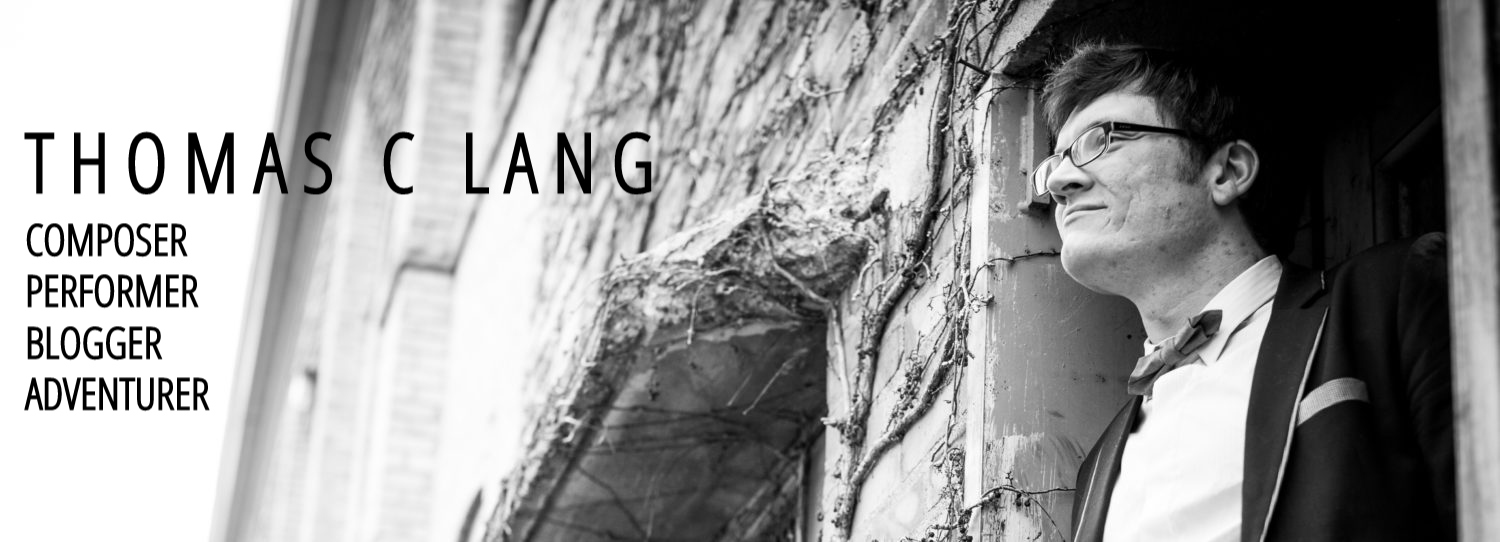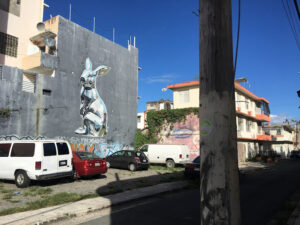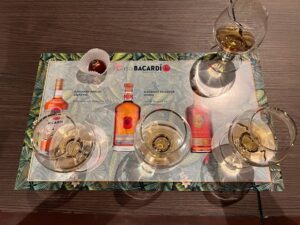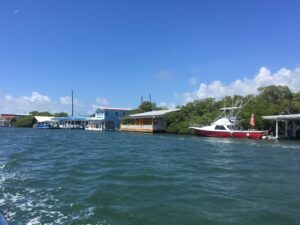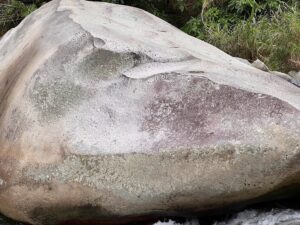“You’re just good at everything. You’re a proper little nerd. You’re good at video games, literally all school subjects but especially maths, playing the drums, befriending dogs, and you are good at sports! You run so fast!”
As we move into the second episode of Heartstopper, “Crush,” the show is now able to take time to unpeel the layers of these incredible characters a little bit. Where the first episode necessarily focused heavily on painting broad brush strokes to capture each character’s prime traits through the creative use of framing characters in shots orchestrated with specifically chosen lights and colors, the second episode focuses on tinier, more intimate details of each character’s motivations through elegant, subtle, and carefully timed reactions, capturing the tiniest furrowed brow or the faintest hint of a smile, often unseen by anyone around them except the audience, which provides just enough of a knowing glance towards what someone is really thinking, despite what they’re actually saying, allowing the audience to be one step ahead of all the other characters. And the cast and their director, Euros Lyn, are all so talented in their abilities to conjure these exquisite moments seemingly effortlessly, creating characters we really believe could be entirely accurate reflections of reality.
The episode opens in Charlie’s bedroom with him practicing on his drum kit, a calm, steady, rhythmic pattern at first, as Nick is in his bedroom scrolling on his phone, looking at Charlie’s Instagram photos. He smiles ever so subtly at an image with Charlie and a cat. But then Charlie’s next photo reveals the dark school corridor leading to the rugby changing room with the subtitle, “hate this place,” and immediately Nick’s face turns white as he looks up from his phone, a look of worry in his eyes, a tiny wrinkle between his eyebrows, as he imagines Charlie being teased in that corridor, the screen turning dark, animations of anonymous boys crowding around him as Nick hears them taunt, “He’s so gross,” “What a weirdo,” “He’s such a loser,” and “I’d rather be dead than gay.” As the images and the dialogue intensify, so too does Charlie’s drum pattern, louder and louder, Nick imagining Charlie in that dark corridor on the verge of tears, Nick calling out to him.
It’s clear that Nick is thinking not only of how hard it must be for someone to be out of the closet but to also have to deal with an abusive boyfriend. He struggles to find the right text to respond to Charlie’s message from last episode, “Thank you x,” typing but not sending, “It’s okay!!” But the expression on Nick’s face is of frustration, as he knows that’s not what is the right thing to say, but he didn’t know it until he typed it. So he tries, “That seems like a kinda serious situation,” and then, “Please don’t talk to Ben anymore lol,” before finally settling on, “Are you feeling okay?” sending the message with a nervous, heavy sigh. We hear Charlie’s phone ding, he immediately stops playing the drums that have now reached their final, intense crescendo, and grabs his phone which was clearly placed in plain sight by his feet as if he was waiting for Nick’s response, the ever growing drum pattern simultaneously representing Charlie’s frustration as he waits for Nick’s response as well as Nick’s growing concern for Charlie’s safety and how to respond to his message.
As I mentioned in my reaction to the first episode, this is all another example that again demonstrates how adept this show is at presenting a lot of information in a short period of time, a seemingly simple series of images and reactions enhanced by some diegetic music, all immediately intelligible to the audience despite how much we see in a short space of time. Within a minute and half of this episode, we learn that Nick really is a warm and caring individual, something that was suggested when we first saw the camera focus in on him in episode one, sitting at his desk, lit by a glowing sunbeam, prismatic rainbows radiating outwards. But now we see this character trait reinforced by Kit Connor’s reliably masterful acting as well as by how the scene is edited together to show Nick’s various drafts of his text messages to Charlie, an efficient way for the audience to get to know how Nick’s mind works and what he’s thinking.
And this highly crafted scene continues with this attuned attention to detail, capturing subtle facial reactions to texts, performed with equal aplomb by Joe Locke. These text message conversations—a staple of the series—are really a quite remarkable way to present dialogue in a refreshing way, as we get to see characters try out drafts of what they want to send before they send a curated message, and we see their raw and unedited facial reactions to texts since there’s no one around that might cause them to adjust how they hold their face. For example, Charlie’s response to Nick’s question is, “Yeah, I’m fine, don’t worry,” but the reaction in Nick’s face is clearly one of incredulity, something the audience sees but Charlie doesn’t. So the audience knows that Nick doesn’t believe Charlie, but Charlie doesn’t necessarily know that Nick doesn’t believe him. So instead we get to witness Nick coaxing information out of Charlie until he finally catches up with Nick and the audience and divulges how his relationship with Ben started and why it ended so badly. Nick is clearly so appalled to learn how horrible Ben is that he texts back that Ben’s not his friend anymore.
This touching scene ends with Charlie sending Nick a heart emoji when Nick says he’ll look after Charlie if Ben ever comes near him again. The look on Nick’s face, one of cautious hope and alluring warmth peppered with the faintest hint of confusion about what he’s feeling with Charlie (a confused feeling that will come to a head at the episode’s conclusion), is worth a thousand words, as they say (and I’m quite good at finding several thousand words). But Charlie doesn’t get to see Nick’s reaction, and he’s left to wonder what Nick is thinking while the audience has a pretty good idea of what’s starting to happen. Yet I felt such a loneliness for Charlie in that moment, Joe Locke’s superbly subtle, wordless performance capturing Charlie’s inner frustration that Nick can only be his “supportive straight friend,” but the audience already knows that Nick seems to be more than that, and we can’t wait for Charlie to catch up with us when he also gets to learn what’s actually motivating Nick’s desire to get to know him better.
The episode moves on to allow us more time to get to know Elle, who we met ever so briefly last episode. Recall that she is transgendered and left Truham in order to go to Higgs Girls School to escape bullying, one of the teachers at Truham even refusing to call her Elle. “Mr. Reed’s a massive transphobe,” Charlie remarked. In this episode, we first re-meet Elle as she’s walking to and taking a seat in her form classroom, the camera focusing its attention on two other young women at a different desk who we’ll later find out are Tara (Corinna Brown) and Darcy (Kizzy Edgell), and who Elle also seems intrigued by.
Elle’s form teacher has noticed that she has yet to make any friends and suggests she could assign Tara to look after her. But after Elle says she’s fine, the teacher then asks her to promise to make at least one new friend in the next couple of days before half-term. A montage allows us to witness time pass as Elle remains friendless in form, and during the montage we are treated to Yasmin Finney’s delicately underplayed and finely crafted ability to capture Elle’s inner thoughts with the slightest smile or the sweetest glance. A moment that sticks out to me is when Elle is staring into her form group, her face framed perfectly in a split-pane window, as she stares longingly to be friends with Tara and Darcy. It is such a lonely moment, but also a moment that can only lead to Elle finally becoming friends with Tara and Darcy. It is also an early example for the audience to witness Finney’s remarkable acting talent as she captures so much about a character in a single moment because of a subtle, longing glance. It’s the first exquisite glance of many that we’ll be treated to during the succeeding episodes, and each underplayed glance never fails to tell us so much about Elle through so little.
When we finally do get to see the first conversation between Elle and Tara, it’s when Tara comments lovingly about how cool her pencil case is, Elle revealing that she painted the charming flowers on it herself. “That’s so cool! I can barely draw stick figures!” Tara says, they both laugh, and then without another beat Tara asks, “Do you want to meet up for lunch with us today?” After Elle wonders if their form teacher cajoled Tara into reaching out to her, Tara says she didn’t, and it all seems believable, Elle’s slightest smile revealing feelings of inner hope and warmth that things continue to get better at her new school.
This hope is reaffirmed when Elle has lunch with Tara and Darcy for the first time, and the chemistry between the three of them is absolutely remarkable. The casting of this whole series has been remarkable, frankly, and it’s clear that not only are we witnessing a cast of close-knit friends in a fictional series who care deeply for each, we’re also being invited into the lives of real-life friends who also love working and being with each other. “Best gal pals,” Darcy describes her friendship with Tara, Tara providing just the slightest knowing glance towards Darcy not to reveal too much yet (an anxiety within Tara that will be clarified better later in this episode and which will come to a climax in episode six). But Darcy’s warmth in her comment cements that soon—if not already—the cast has a trio of best gal pals.
When we return to Nick and Charlie’s story, we see Charlie, Isaac, and Tao in study hall, Charlie scrolling through his phone, re-reading texts from Nick (“Anywayyy I have to sleep now… it’s so late haha,” Nick texts at one point after suggesting they need to play Mario Kart together). The look on Charlie’s face is of quieted infatuation, and even if Charlie scrolling through the texts is too fast for us to notice that Nick at one point writes, “I like talking to you,” the charmed expression on Charlie’s face is enough for us to know that he’s already starting to sense that Nick might be more than just a supportive straight friend. But Isaac and Tao tut and dismiss Nick as a “massive” and “ginormous heterosexual,” but Charlie is undeterred, stating that masculine men can be gay or even bisexual, foreshadowing revelations to come. While Tao’s insistence that Charlie needs to get over him is a moment of cold, tough love, it’s coming from a place of deep care for his friend’s wellbeing. “Be careful!” Tao told Charlie last episode. Tao’s distrust of the rugby boys is something that will continue to insert conflict into the plot, reaching a heartbreaking climax in episode seven, and it’s at once so sad to witness but also a necessary element of the story to show how much Tao cares for Charlie’s feelings and his safety.
Later on, Nick is showing pictures of his dog, Nellie, to Charlie, and much to Charlie’s delight, he invites him around on Saturday to meet her. It’s so adorable seeing how nervous Charlie is as his finger anxiously shakes ever so slightly as it hovers over the doorbell, pausing a moment before he rings it. But his nerves seem to dissipate immediately when Nick comes to the door, Nellie at his feet, and both of them get along like cards as they play Mario Kart, Nick commenting how he’s so good at not only video games but also maths, music, and running, Charlie struggling to find a way to accept the compliment.
We next are treated to one of those moments I promised would appear in each episode, a moment that “persistently champions a promise of a hopeful future where things will get better, providing a vision for the way things ought to be.” Nick and Charlie notice that it’s started snowing, and so they both go out with Nellie to enjoy it, throwing snowballs, making snow angels, catching snowflakes on their tongue, and lying next to each as the the snow continues to fall, the camera pulling back away from the ground as they lie next to each other while those characteristic animations of the show appear, this time as heavy snowflakes that augment the real ones we see on the screen. We’re also treated to another one of those subtle reaction shots, this time of Charlie staring lovingly towards Nick as they lie in the snow together, while enchanting music by Beabadoobee, “Dance with Me,” plays, the words echoing the visuals with lyrics like, “But I think I really like you.” This lovely, lovely moment that makes me feel just so, so happy imprints an indelible memory within me, and it’s a memory that imprints on both Charlie and Nick as we’ll later see in episode five.
We at last eventually get to see our quartet of best friends all interact together in person, when Tao calls an “emergency Charlie meeting” between Elle, Charlie, Isaac, and himself. They all want to get to the bottom of Nick’s sexuality, as Tao has heard that Nick likes a girl, and he only found this out because he was sweetly asking around for Charlie to see if Nick is available. Seeing the four characters interact together is a real delight, as they all clearly care deeply for each other. “I wanna believe in romance!” Isaac enthusiastically declares, hoping to discover that Nick likes Charlie back. The charming scene ends with the four of them getting together for a group hug, even Tao joining in who is hesitant at first. But it’s just so heartwarming to watch a television show about four really good friends from diverse backgrounds who want to make sure everyone is okay.
The girl in question that Nick apparently likes, of course, happens to be Tara Jones, who Elle has just become friends with, and so Tao, Isaac, and Charlie ask her to find out if Tara is interested in Nick. Elle is thrown the best bone ever when she is in French class with Tara and Darcy, and they are assigned to practice asking questions about each other. “Vous avez un petit ami?” she asks Tara, and Tara responds, “Non, je n’ai pas de petit ami.” And then Tara and Darcy both knowingly laugh, “What? It’s true!” Tara says, “I know it is!” Darcy responds. We are treated to some more lovely, subtle glances from Elle as she cautiously sizes up Tara and Darcy as more than just “best gal pals.” Later on, Elle confirms without a doubt that Tara and Darcy are both in a relationship (“You’ve befriended the school lesbians!” Darcy exclaims to Elle), but that it’s not really public information yet. Later on, Charlie is ecstatic that there’s no chance of anything happening between Nick and Tara, Elle carefully not revealing the reason why.
The episode reaches its conclusion when Nick comes by Charlie’s house where it becomes clearer and clearer that Nick is so obviously more than just a supportive straight friend. In another scene that just makes me feel such happiness, Nick and Charlie are both on the couch watching television, the hopeful, optimistic music of series composer Adiescar Chase underscoring this touching moment. Charlie is asleep, but Nick is awake and notices Charlie’s hand resting next to his knee, palm up. Nick nervously hovers his hand over Charlie’s, small animated fireworks lighting up the space between their two palms, an intense moment that expertly captures that feeling we all feel when we start falling for someone and feel a burning desire to make physical contact. Later on, when they have to say goodbye, Nick can’t resist but give Charlie a long, long hug. It is such a tender moment. This episode yet again finds a way to make me feel so, so happy that I don’t have enough room in my heart to keep the happiness all to myself. So I’m sharing it now with you.
There’s a final epilogue to the episode that transitions from exploring the absolute happiness that Nick feels for Charlie to the absolute terror that we queers feel when we realize who we are. I won’t dwell on it too much here, as episode three allows this moment more space. That said, when Nick is back home all alone in his bedroom, admiring photos of Charlie in the snow, he grabs his computer and goes to Google and types in “Am I gay?” The fear in Nick’s face is palpable before he even presses return on his keyboard, and his fear is a reflection of so much fear we queers feel everywhere, a moment that accurately reflects a very real realty. And while this episode ends on a sobering note, it’s necessary for this series to address these challenges we queers face. But it is all done with such delicate sensitivity and such loving care that it is clear that in the end—through all the debilitating pain, lonely suffering, and overwhelming adversity—things will get better… and hope, happiness, friendship, and love will prevail.
Final musings for episode 2:
- When Nick is texting Charlie about how Ben is no longer his friend, Nick types, “If [Ben] ever comes near you again I’ll kick his ass.” I must concede that the use of the word ass could be a situation of American slang catching on in British English, but I’m more inclined to believe this is the first example of several (I’ll be sure to point the other examples out as as they appear) of a British programme (i.e. show) dumbing things down for Americans. In other words, I would have expected Nick to type arse instead of ass, but maybe ass is catching on in the UK. I couldn’t really tell when I did a bit of research on the use of ass versus arse, but if anyone knows for sure or if I’m being pedantic, please comment below. (I’m probably being pedantic.)
- Rainbows again appear throughout this episode as they did in episode one when we first met Nick, this time in episode two when we initially see an establishing shot of Higgs Girls School, a rainbow streaking across the sky, and then again when Charlie is outside Nick’s house. Nick’s house is lit up in another sun beam, recalling the warm light that lit up Nick in his establishing shot last episode, while a sunbeam creates a prismatic rainbow next to Charlie. These are lovely little visual touches that further demonstrate the delicate care everyone brings to creating this amazing show.
- When Elle meets up with Tara and Darcy for the first time at lunch, Darcy gives Elle a Monster Munch, which is a British junk food: baked corn shaped into paws that come in flavors like roast beef, pickled onion, and flamin’ hot. I’ve had various British junk foods like Wine Gums and Jelly Babies, but now I’ll need to make sure to try a bag of Monster Munch next time I’m over there.
- The scenes between Charlie and his mentor and art teacher, Mr. Ajayi, are a delight to watch, the sage-like wisdom of Mr. Ajayi attempting to temper the distracted dreamings of a young, infatuated teenager. “I am officially a beacon of learning,” Mr. Ajayi describes himself, but we didn’t need him to say that aloud in order to understand it’s true, another example of this show being so adept at showing a character’s motivations before we’re explicitly told.
- When Isaac, Charlie, and Tao are working on homework in class, Charlie says that Nick told him he was straight. I wasn’t sure if that revelation was a moment unshown on screen or if he was referring to the text exchange we saw early in the episode where Charlie writes, “Thank you for being my supportive straight friend haha,” and Nick responds, “Lol that’s okay!!!” Nick’s response is rather a non-answer to his sexuality, though, so I’m tempted to believe that Charlie is just inferring too much in order to try to help him get over his crush.
- Jenny Walser as Tori, Charlie’s sister, continues to delight. Two episodes in a row now, it’s clear the running gag with Tori is that she has a knack for appearing out of thin air while sipping on a drink with a straw, startling a distracted Charlie. Walser’s deadpan delivery of lines like, “It looks the same,” when Charlie asks how his hair looks, or “I don’t think he’s straight,” after witnessing Nick hug Charlie for several seconds, are just some lovely moments of a brother/sister relationship that slowly reveals itself to be as close as ever as the episodes progress.
- We get to see more of Olivia Colman this episode as Nick’s mom, and it’s always such a delight whenever we get to have a scene with her and Kit Connor. Colman as usual delivers a superb performance of an observant, caring mother who enjoys seeing how Nick has made friends with Charlie, someone who’s quite different from his other friends and around whom Nick seems to be able to be more like himself, as if Charlie allows a part of Nick that is buried to emerge.
- We also get to meet Imogen (Rhea Norwood), a bubbly young girl who is friends with Nick, and who we’ll get to know a little better in episode three.
- How cute is it when Nick and Charlie are saying goodbye after hanging out at Charlie’s house, and Nick admires Charlie wrapped in a blanket, commenting, “You look so cuddly like that!” I think Tori’s right: doesn’t seem like a straight boy to me either.
